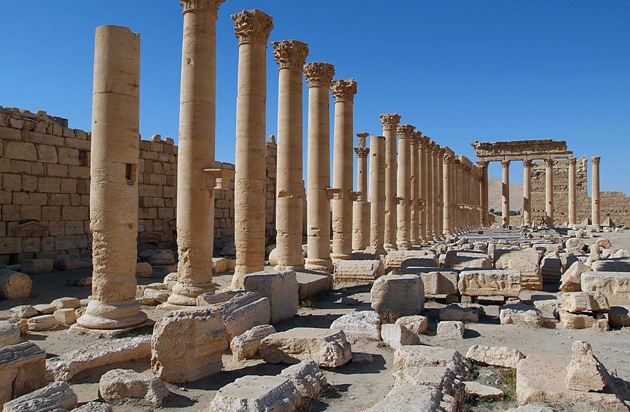Ancient City Of Palmyra Seized By The Islamic State
The ancient city of Palmyra fell into the hands of the Islamic State following an assault against Syrian government forces that lasted for several days. The fall of the city came amid a call from the United Nations to an end of the siege to ensure the safety of civilians and precious artifacts in the city.
The Syrian Observatory for Human Rights said a good part of the city were under the control of the militants by Wednesday evening. The Observatory added that over three hundred people, including over fifty civilians, were killed due to the conflict. A number of those killed were executed by the extremist group.
The National Defense Force of President Bashar al-Assad evacuated civilians from the city before they fled. The militants were able to control the residential areas of the city and they tried to take the ancient ruins close to the city.
The loss of Palmyra is considered a major victory for the Islamic State after it took control of the city of Ramadi, the capital city of Anbar in Iraq. The strategic location of the Syrian city will allow the extremist group to control areas close to critical government-held areas, including Damascus and Homs.
UNESCO considers Palmyra as one of the most important heritage areas in the Middle East. The cultural agency of the UN has expressed its concern on the safety of the 2,000-year-old city following the destruction of ancient sites in Iraq and Syria in the hands of the Islamic State. The agency called for an immediate end to the conflict as it also expressed concern on the safety of civilians and the possible effects on the ruins.
The ancient city features a Roman colonnaded street, an ancient citadel and the temple of Baal, an ancient deity worshipped by many communities in the past.
The remote desert outpost was called the “Bride of the Desert” by the Syrians before the war. It was also one of the most popular tourist destinations in the area.
Maamoun Abdulkarim, antiquities head of Syria, said a good number of statues were already moved to safer locations. He also asked the Syrian military to work with the opposition and the international community in ensuring the safety of the site. Aside from the ancient city, UNESCO considers five other official heritage sites in Syria to be in danger of being affected by the war.
Since the start of the civil war in Syria in 2011, a good number of sites were already damaged, plundered or destroyed as huge swathes of territory in both Iraq and Syria were conquered by the Islamic State. The ancient city of Nimrud was destroyed this year while artifacts in the Mosul Museum of Iraq were smashed. Authorities have raised concerns that the ancient city of Palmyra will suffer the same fate.
